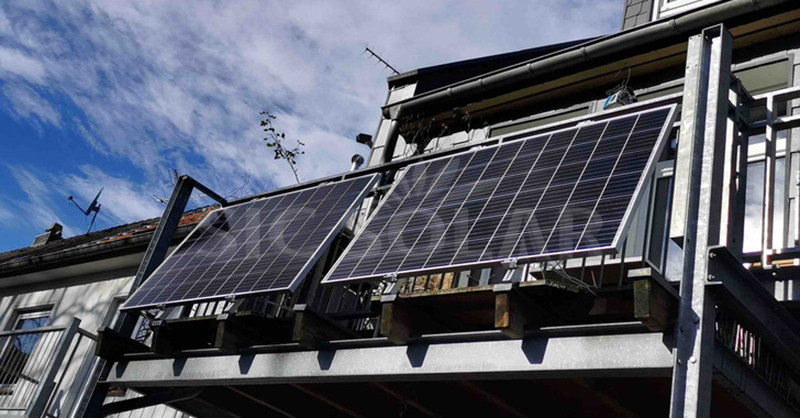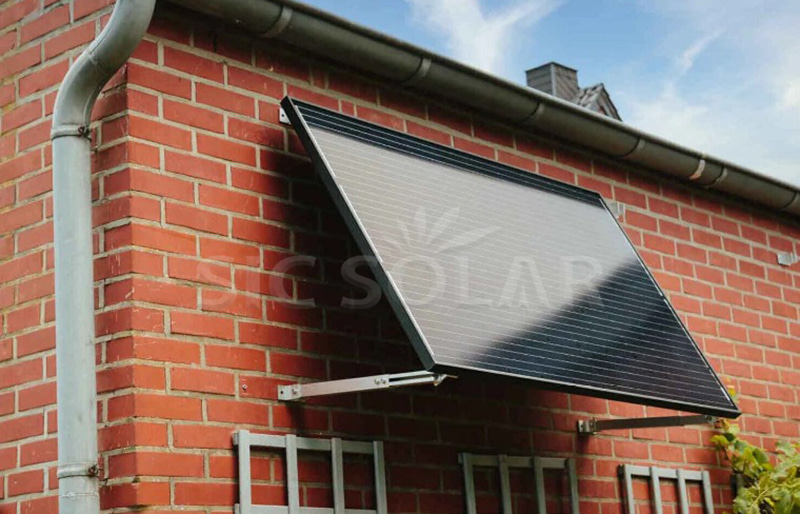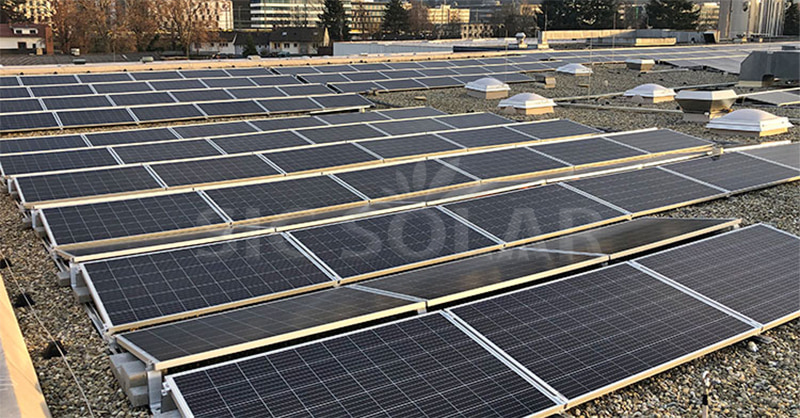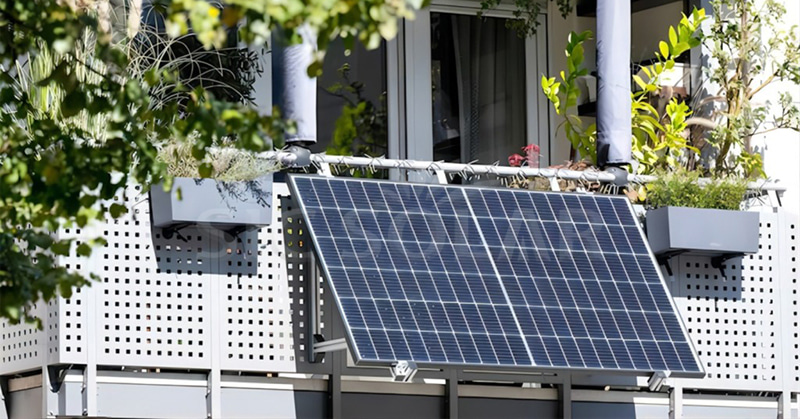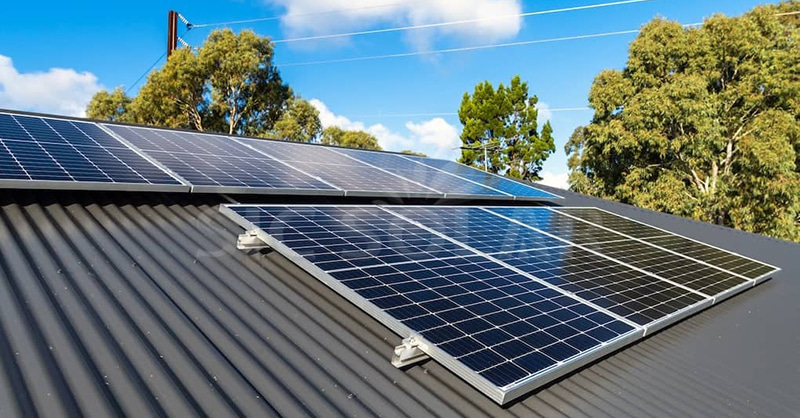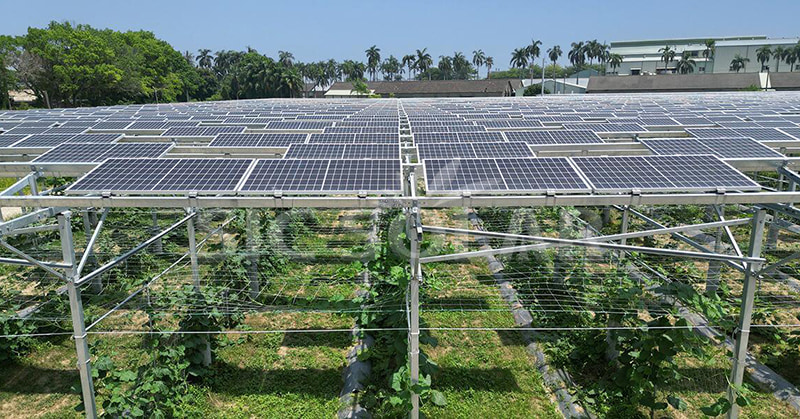As urban living becomes more common, space for traditional rooftop solar installations may be limited. Balcony solar systems offer a solution, allowing residents of apartments and buildings with small outdoor spaces to generate clean energy from the sun.
What Is Balcony Solar?
Balcony solar refers to small-scale solar installations designed specifically for use on balconies or other compact outdoor spaces. These systems typically consist of one or more solar panels, an inverter, and a connection to the home’s electrical system. The panels can be mounted on the balcony railing, attached to walls, or even placed on stands or small ground mounts.
Balcony solar systems are a great way for urban dwellers to contribute to sustainable energy production without requiring a large rooftop space. They offer a flexible and scalable solution for those who want to reduce their electricity bills and lower their carbon footprint.
How Does Balcony Solar Work?
The basic operation of a balcony solar system is similar to larger rooftop systems but on a smaller scale. Here's how it works:
-
Solar Panels Collect Sunlight
The solar panels installed on your balcony capture sunlight and convert it into direct current (DC) electricity. These panels can be mounted on railings, walls, or other supports, depending on the design of your balcony. -
Inverter Converts DC to AC Power
The DC electricity generated by the solar panels is sent to an inverter, which converts it into alternating current (AC) power. This is the form of electricity used by most home appliances and devices. -
Connecting to the Grid or Battery Storage
Once the inverter converts the electricity to AC power, the energy can either be fed directly into your home’s electrical system or stored in batteries for later use. If the system is grid-connected, excess energy may be sent back to the grid, potentially earning credits through net metering, depending on local regulations. -
Energy Usage
The electricity produced by the balcony solar panels can be used to power various household appliances, reducing your reliance on grid power and lowering your utility bills.
Benefits of Balcony Solar
Balcony solar systems offer several benefits, especially for those living in urban environments:
-
Space-Efficient
Traditional rooftop solar installations require large, open spaces, which are not available to many apartment or condo dwellers. Balcony solar is a space-efficient alternative that allows you to generate renewable energy even in a small outdoor area. -
Cost-Effective
Balcony solar systems are generally more affordable than larger rooftop setups, making them a viable option for those with smaller budgets. They can also help reduce monthly electricity costs, providing savings in the long run. -
Easy Installation and Maintenance
Unlike rooftop solar systems, balcony solar installations are simpler to set up and often do not require the involvement of specialized installers. With the right mounting system, such as those offered by SIC Solar, the installation process can be streamlined, ensuring your panels are securely mounted and positioned for optimal sun exposure. -
Environmentally Friendly
By generating your own solar power, even on a small scale, you can reduce your carbon footprint and contribute to the global transition to renewable energy.
Choosing the Right Mounting System for Balcony Solar
The success of a balcony solar installation largely depends on selecting the right mounting system. Balcony setups can be trickier than rooftop systems because the available space is often more limited, and the mounting surface may vary. Here are some factors to consider:
-
Adjustability
Balcony solar panels need to be positioned at the correct angle to capture as much sunlight as possible. An adjustable mounting system is essential to allow for easy repositioning of the panels based on seasonal changes or varying sun angles. SIC Solar provides adjustable mounting solutions that make it easy to optimize your system’s energy production. -
Safety and Durability
Securing solar panels on a balcony presents unique challenges, particularly if the panels are mounted on railings or walls. It’s essential to use a strong, durable mounting system that can withstand wind, rain, and other weather conditions without compromising safety. SIC Solar products are made from high-quality, weather-resistant materials that ensure the stability and longevity of your installation. -
Compatibility with Different Balcony Types
Balconies come in different shapes and sizes, and the mounting system you choose should be versatile enough to fit different configurations. Whether you need a railing-mounted, wall-mounted, or freestanding system, SIC Solar range of photovoltaic mounting systems is designed for flexibility, making it easy to adapt to your specific balcony setup.
How Much Energy Can a Balcony Solar System Generate?
The amount of energy a balcony solar system can generate depends on several factors, including the number of panels, the size of the panels, the angle of installation, and the amount of sunlight your balcony receives. Typically, a single balcony solar panel can generate between 100 and 400 watts of power. While this may not be enough to power an entire home, it can significantly reduce your energy consumption for smaller appliances, lighting, or charging electronic devices.
For instance, a small system producing 200 to 400 watts can cover the energy needs of everyday items such as:
- Charging laptops and phones
- Running LED lighting
- Powering small kitchen appliances
- Running fans or low-power electronics
This reduces your overall energy demand from the grid, helping to lower your electricity bill.
Steps to Install a Balcony Solar System
Here is a simplified overview of how to set up a balcony solar system:
-
Assess Your Balcony Space
Measure your balcony to determine how much space you have for solar panels and where they can be best positioned to capture sunlight. -
Select Your Solar Panels
Choose solar panels that are appropriately sized for your balcony. For most balcony setups, smaller panels that generate between 100 and 300 watts will be sufficient. -
Choose a Mounting System
Select a secure and adjustable mounting system, such as those offered by SIC Solar, to ensure your panels can be safely attached to your balcony railing or walls. -
Install the Inverter
The inverter will convert the DC power generated by the panels into AC power that you can use. Depending on the system, the inverter may be located inside or outside the home. -
Connect to Your Home’s Electrical System
Once everything is installed, connect the system to your home’s electrical system or battery storage. Ensure the system complies with local regulations, particularly if you plan to feed excess power into the grid.
Balcony solar offers a practical and efficient way for urban residents to harness solar power in a limited space. By choosing the right solar panels and mounting systems, such as those from SIC Solar, you can create a sustainable, energy-efficient solution that suits your living situation. Whether you are looking to save on energy costs, reduce your environmental impact, or simply explore renewable energy options, balcony solar is a smart choice for city dwellers looking to embrace green energy.
